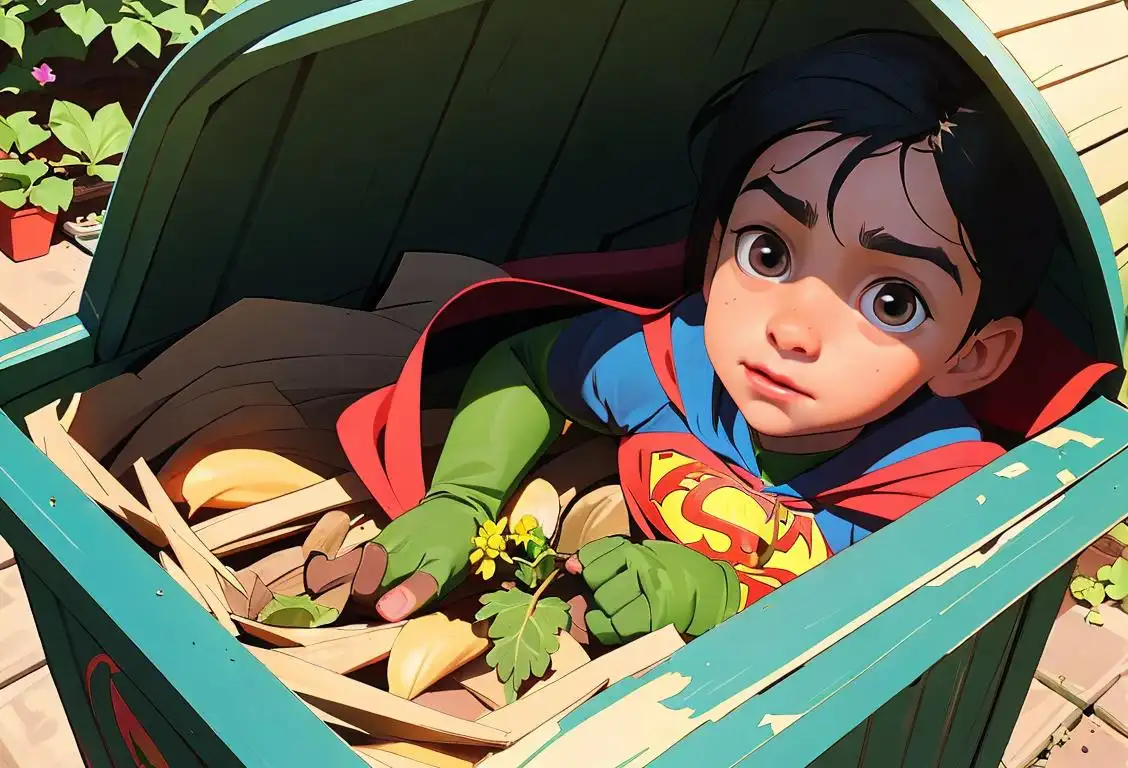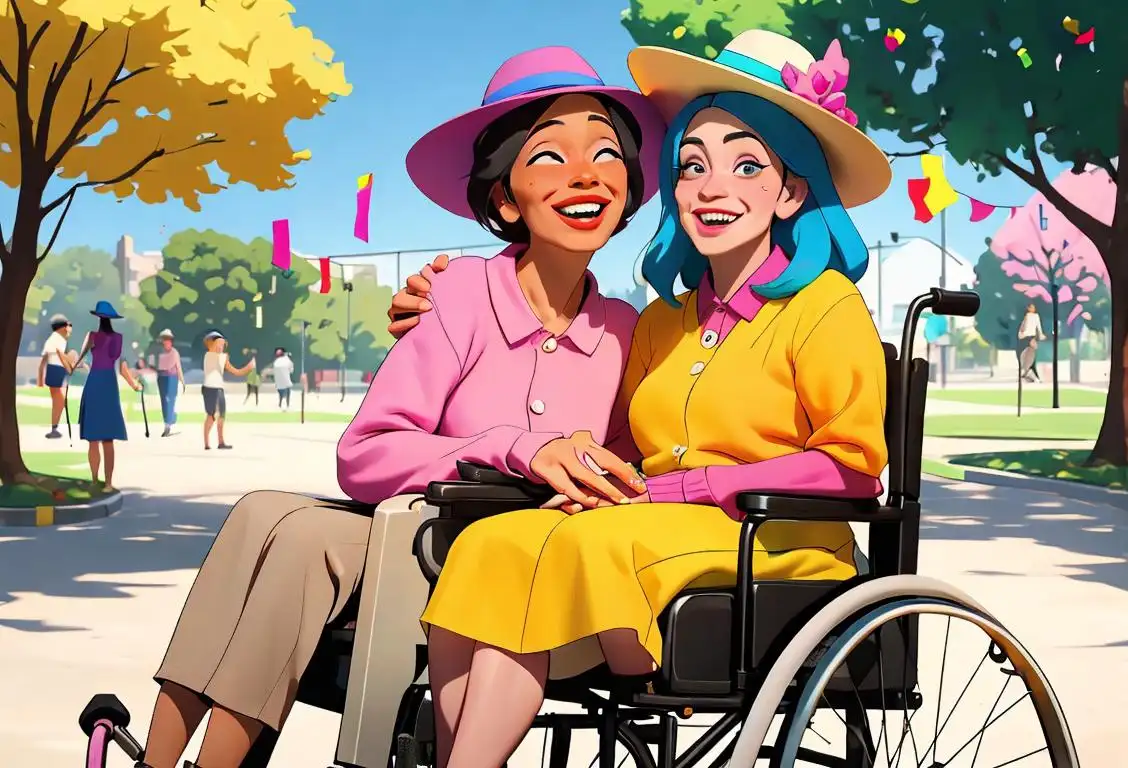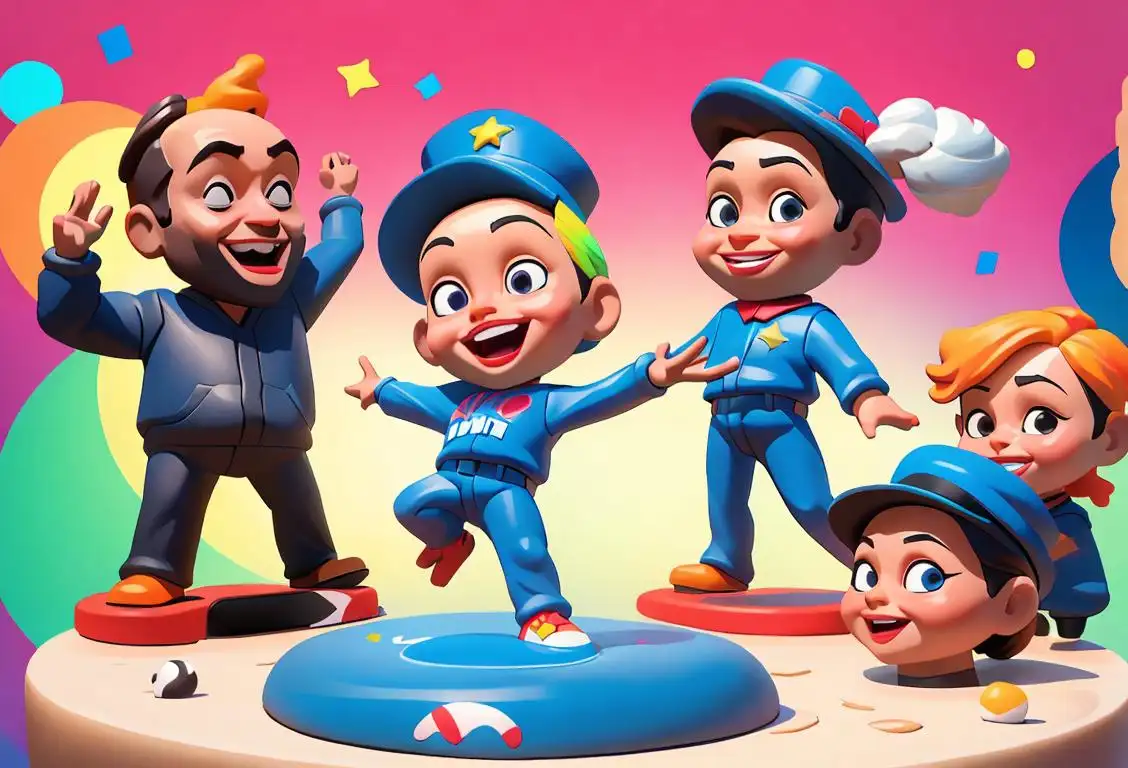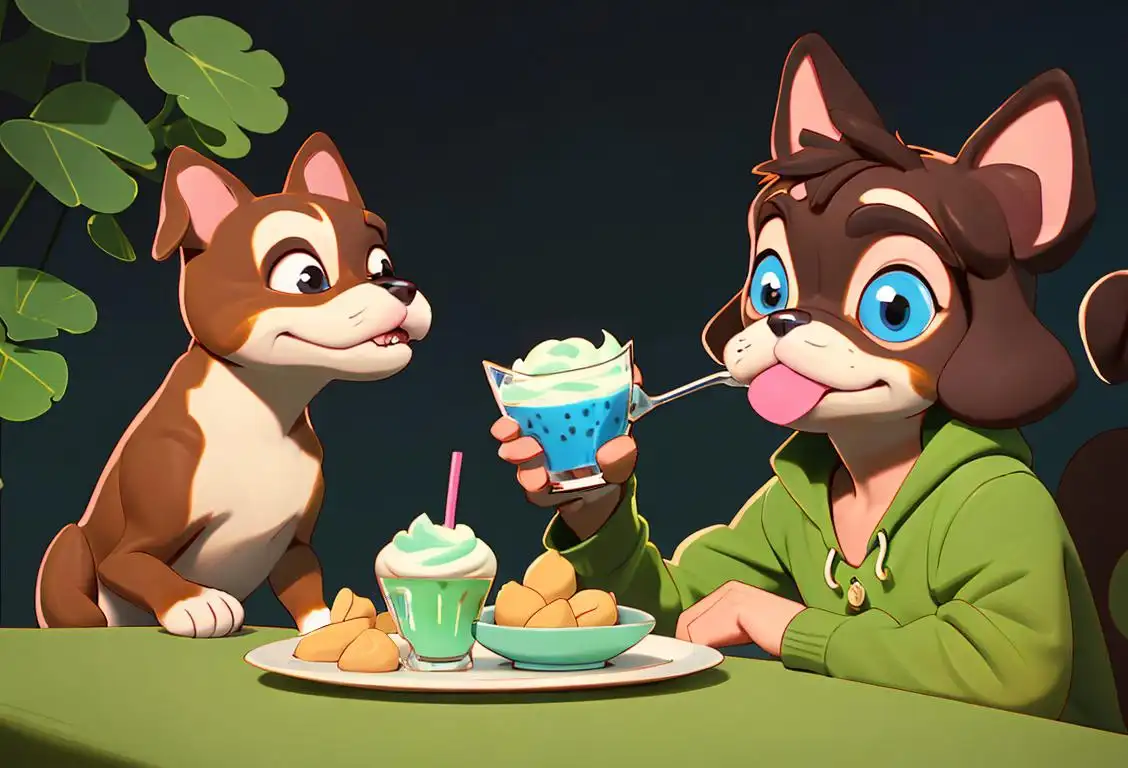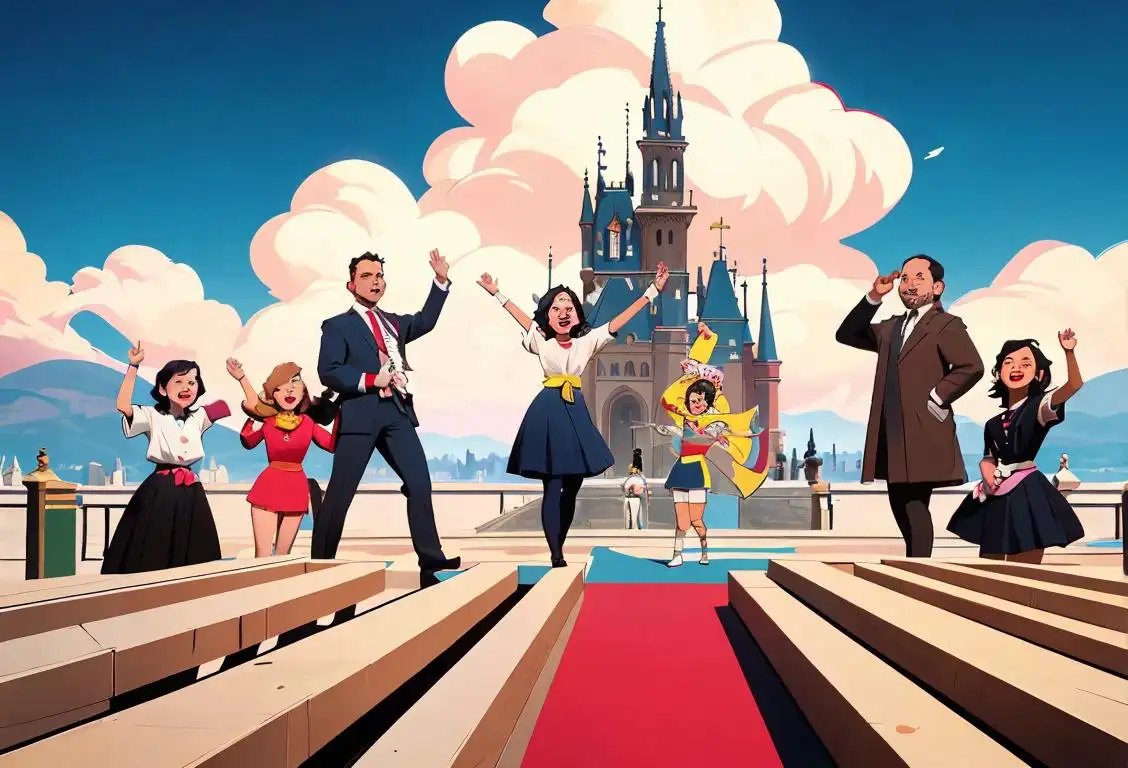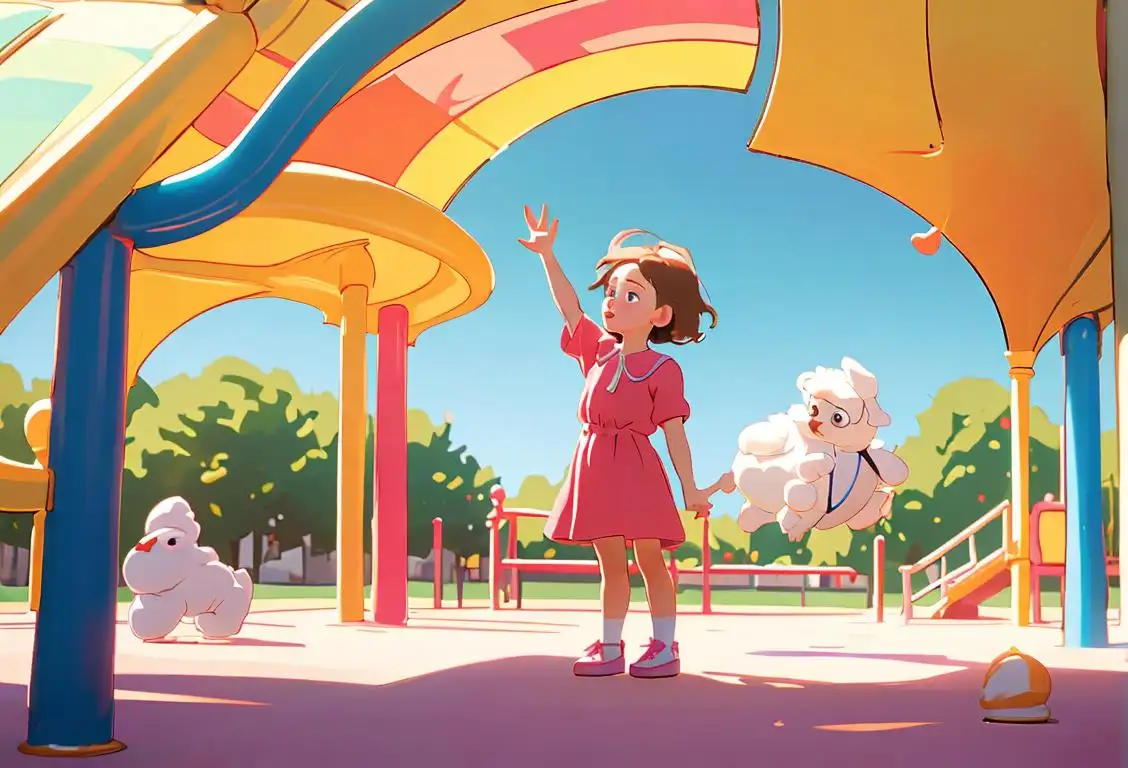National Stripes Day
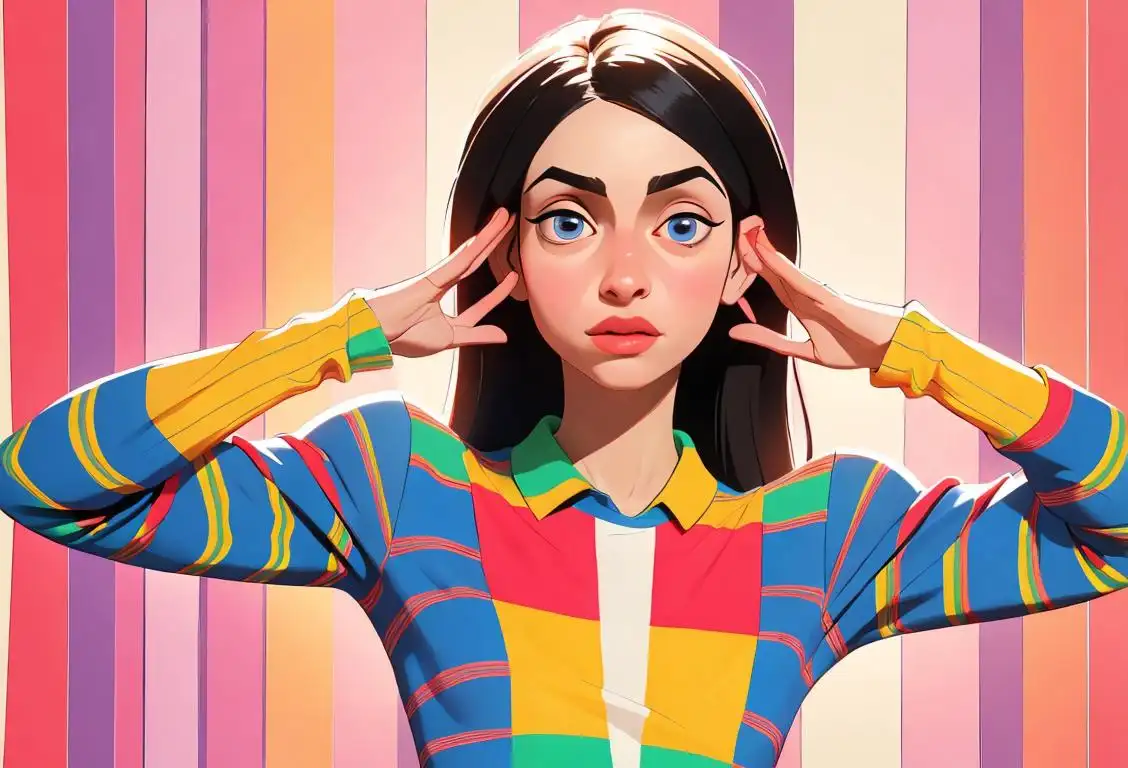
Ladies and gentlemen, get ready to celebrate National Stripes Day - a day dedicated to all things striped! Whether you're a fan of fashion or just appreciate a good pattern, National Stripes Day is the perfect opportunity to show off your love for those parallel lines. So grab your striped attire and prepare for a day full of style and charm!
When is Stripes Day?
It's national stripes day on the 31st March.
The Internet History of National Stripes Day
Let's dive into the fascinating internet history of National Stripes Day. This unique celebration first gained popularity online, where fashion enthusiasts and creative minds joined forces to form a community dedicated to all things striped. The charming allure of stripes quickly captured the hearts of internet users far and wide, leading to the creation of this delightful national day.
The earliest online mentions of National Stripes Day date back to March 31, 2017. This day saw an explosion of striped outfits and fashion inspiration flooding social media platforms. People from all walks of life shared their love for stripes by posting photos adorned in their favorite striped garments. It became a virtual runway of creativity, showcasing the versatility and timeless appeal of stripes.
Since its inception, National Stripes Day has continued to gain traction each year, with online communities organizing striped-themed events, sharing fashion tips, and encouraging everyone to embrace their inner fashionista. From sleek pinstripes to bold and vibrant patterns, there's a stripe for every taste and style.
Celebrate National Stripes Day
Now that you know the internet history of National Stripes Day, let's explore how you can celebrate this stylish occasion. Here are a few fun ideas to get you started:
1. Fashion Show Extravaganza: Gather your loved ones and host a fashion show featuring the best striped outfits. Channel your inner model and strut your stuff down the make-shift runway.
2. Create Striped Treats: Show off your culinary skills by baking striped cookies or making a striped fruit salad. Food can be fashionable too!
3. Get Active: Organize a sports day where participants wear sports attire featuring stripes. Build teams, compete, and enjoy a day filled with friendly competition.
4. Rememberance: Take a moment to remember the impact of stripes in history. From military uniforms to iconic fashion trends, stripes have played an important role in shaping our culture.
Did You Know?
Did you know that the world's largest striped object is the Zebrastreifen in Berlin? It's a famous pedestrian crossing with vibrant white stripes that stretches over 200 meters. Talk about crossing the stylish side of the street!
History behind the term 'Stripes'
1200 BC
Ancient Beginnings
Stripes have been present in human culture for thousands of years. The earliest evidence of their use can be traced back to ancient Egypt, around 1200 BC. Archaeologists have uncovered remnants of striped fabrics in burial sites, indicating their importance in both daily life and the afterlife. These early stripes were commonly made using natural dyes and were intricately woven into textiles.
1700s
Early Beginnings
In the 1700s, the term 'stripes' gained prominence as a descriptive term for a decorative pattern consisting of parallel lines. The word 'stripe' originated from the Middle English word 'strip' which meant a long, narrow piece of cloth or material. At this time, stripes were commonly used in fashion and textiles, and they added a visual interest to various garments and fabrics.
1658
Early Origins
The term 'stripes' traces its origins back to the year 1658. It comes from the Middle English word 'stripe,' which meant a long, narrow band or strip of cloth. Initially, the word was used to describe decorative fabric trims or bands used for ornamentation on garments.
1590
The Birth of Stripes
The term 'stripes' originated in 1590, referring to a line or band of color that is uniform in width and runs vertically or diagonally. It was derived from the Middle Dutch word 'striep' and the Middle English word 'stripen' meaning a long, narrow piece or mark.
1000
The Emergence of Stripes
The term 'stripes' can be traced back to Ancient Egypt in the year 1000 BC. The Egyptians were known for their advanced knowledge in dyes and textiles. They created intricate patterns on their clothing using a technique called striping. This involved weaving narrow bands of different colored threads into the fabric, resulting in a striped appearance. These early stripes were primarily used for aesthetic purposes, with each color symbolizing various aspects of life and culture.
1590
The Origin of the Term
The term 'stripes' originates from the Middle English word 'stripe,' which derives from the Old English word 'strīep,' meaning a line or band of contrasting color. It first appeared in the English language in the late 16th century, around 1590.
1775
Symbol of Rebellion
During the American Revolutionary War, stripes gained significant cultural and historical significance. In 1775, the Continental Congress established the Continental Army and adopted the Grand Union Flag - the first national flag of the United States. This flag featured thirteen alternating red and white stripes, symbolizing the thirteen American colonies. The use of stripes on the flag marked a powerful expression of rebellion and American identity.
1777
Stripes on the American Flag
In 1777, the American flag, also known as the 'Stars and Stripes,' was adopted by the Second Continental Congress. The flag consisted of thirteen alternating red and white stripes, representing the thirteen original colonies. Each stripe symbolized the united strength and the valor of the American people.
1847
Stripes in Fashion
In 1847, stripes gained popularity in the fashion world when the French Navy introduced the iconic Breton shirt as part of their uniform. The Breton shirt, with its navy blue stripes and boat neckline, became a symbol of French maritime style and eventually influenced fashion trends worldwide.
1800s
Nautical Influence
During the 1800s, stripes gained significant cultural significance with the rise of seafaring nations. Striped patterns became associated with naval uniforms and maritime flags. The distinctive striped shirts worn by sailors, known as 'Breton shirts,' originated in France and were easily recognizable. The use of stripes in naval attire served a practical purpose as well, making it easier to spot overboard crew members in the vast expanse of the ocean.
1776
The Birth of the American Flag
In 1776, the iconic American flag was born, featuring thirteen alternating red and white stripes to represent the original thirteen colonies. The flag, known as the 'Stars and Stripes,' became a symbol of American patriotism and freedom. These stripes became an enduring symbol in American history and culture, evoking pride and national unity among the American people.
13th Century
Stripes in Medieval Europe
During the 13th century, stripes gained popularity in Medieval Europe. Striped fabrics became highly valued, and the pattern was adopted by various social classes. Stripes were not only restricted to clothing but also found their way into home decorations such as curtains and upholstery. The use of stripes became a status symbol, with each stripe sometimes denoting a person's wealth or social position.
18th Century
The Naval Influence
In the 18th century, stripes took on a whole new meaning with the rise of naval power. The British Royal Navy, in particular, adopted striped uniforms for sailors. The stripes served a practical purpose on ships, allowing sailors to be easily identified if they fell overboard. The iconic blue and white striped 'Breton' shirt also emerged during this time, worn by French sailors. These nautical associations gave stripes a sense of adventure and became synonymous with the sea.
1818
The Establishment of a Standard
By 1818, the United States Congress passed a resolution that declared the flag of the United States would always consist of thirteen stripes, representing the original colonies, and a varying number of stars to represent the current number of states in the Union. This decision solidified the significance of stripes in American national identity, connecting them to the country's history and values.
1850
Stripes in Fashion
During the mid-19th century, stripes gained popularity in fashion. The iconic black and white striped pattern, known as the 'Breton stripe,' originated from the French navy's uniforms in Brittany. This classic striped pattern became a fashion trend and was later popularized by Coco Chanel in her nautical-inspired designs.
20th Century
Symbol of Rebellion
In the 20th century, stripes took on a symbolic meaning associated with rebellion and counterculture. The iconic black and white stripe pattern became synonymous with prison uniforms, representing confinement and rebellion against authority. This association influenced various subcultures, including the punk movement, which adopted striped clothing as a means of challenging societal norms and expressing individuality.
1814
Star-Spangled Banner
Another pivotal moment in the history of stripes is tied to the writing of the American national anthem. In 1814, Francis Scott Key witnessed the bombardment of Fort McHenry during the War of 1812. Inspired by the sight of the American flag (which had 15 stars and 15 stripes at the time) still flying after the attack, Key wrote the poem 'Defence of Fort M'Henry,' which later became the lyrics of 'The Star-Spangled Banner.' The flag, with its prominent stripes, came to represent the resilience and enduring spirit of the United States.
1858
Stripes and Identity
In 1858, the United States Navy adopted the use of stripes on the sleeves of enlisted sailors' uniforms to signify their rank and years of service. This tradition, known as 'service stripes,' not only provided a visual representation of achievement but also fostered a sense of identity within the naval community.
19th Century
Stripes as a Symbol of Rebellion
As the 19th century rolled in, stripes took on a rebellious connotation. The term 'jailhouse stripes' originated as a result of striped uniforms worn by prisoners. Stripes became a visual representation of rebellion and the counterculture, with artists and intellectuals adopting the pattern as a symbolic protest against societal norms. Striped clothing became a bold fashion statement, challenging traditional fashion etiquette and becoming synonymous with non-conformity.
1876
Stripes in Sports
In 1876, the Chicago White Stockings (later known as the Chicago Cubs) became the first baseball team to incorporate stripes into their uniforms. The vertical pinstripes on their jerseys not only made them visually distinctive but also sparked a trend in sports fashion, with many teams adopting striped uniforms in various colors and designs.
1845
Reducing Stripes
In 1845, the number of stripes on the American flag was officially reduced to thirteen to represent the original thirteen colonies. This alteration ensured that the flag maintained its iconic symbolism without becoming overly crowded with stripes.
1915
Stripes in Sports
In 1915, the legendary baseball team, the Chicago Cubs, introduced a pinstriped uniform. The vertical pinstripes on their jerseys became one of the most recognizable features in sports. Pinstripes later became associated with the New York Yankees and became a symbol of their storied history and legendary players.
Late 19th Century
Stripes in Sports
During the late 19th century, stripes gained popularity in the realm of athletics. Striped uniforms became commonly associated with sports teams, particularly in the emerging sport of football (soccer). The distinctive striped designs allowed players to easily identify their teammates on the field while adding a sense of unity and identity to the respective teams. This trend continues to this day, with many sports teams incorporating stripes into their uniforms.
1960s
Stripes in Pop Culture
The 1960s marked a turning point for stripes in pop culture. The fashion industry embraced bold and vibrant striped patterns, bringing them into the mainstream. Designers like Rudi Gernreich and Yves Saint Laurent incorporated stripes into their iconic designs, making them a symbol of mod fashion. Stripes also became popular in home decor, with striped wallpaper and furnishings adorning many fashionable interiors.
1917
The Evolution of Zebra Crossings
In 1917, the concept of zebra crossings, marked by alternating black and white stripes, was introduced in the United Kingdom. These crossings were designed to enhance pedestrian safety by providing a clearly visible pathway and indicating right of way. The term 'zebra' was used due to the resemblance of the black and white stripes to the patterns on a zebra's coat.
1981
Stripes on the Big Screen
The movie 'Stripes,' released in 1981, directed by Ivan Reitman and starring Bill Murray and Harold Ramis, brought the term 'stripes' into popular culture. The film follows the hilarious misadventures of a group of friends who join the U.S. Army. It became a comedy classic and contributed to the continued popularity and recognition of the term 'stripes.'
1896
Olympic Symbolism
Stripes also made their mark in the world of sports symbolism. The year 1896 marked the revival of the modern Olympic Games in Athens, Greece. The Olympic flag designed by Pierre de Coubertin featured a white background with five interlocking rings, each representing a different continent. These rings were encircled by a wide stripe, symbolizing the unity of nations and the unifying spirit of the Olympic Games.
Present
Versatile and Timeless
Today, stripes remain a versatile and timeless design element. They continue to be a fashion staple, appearing in various forms such as pinstripes, chevron stripes, and bold block stripes. Stripes are not limited to textiles alone but have also found their way into other aspects of contemporary culture, including graphic design, branding, and even technology. Their enduring popularity showcases the universal appeal and visual impact of this iconic pattern.
20th Century
Symbolism in Pop Culture
In the 20th century, stripes took on additional symbolic meanings in popular culture. The black and white stripes associated with prisoners' attire became a widely recognized symbol, often conveying ideas of incarceration and loss of freedom. Additionally, stripes became a popular design element in various forms of art and design, representing concepts such as dynamism, movement, and visual interest.
20th Century
Stripes in Pop Culture
The 20th century saw stripes infiltrating various aspects of pop culture. In 1917, the famous painting 'Broadway Boogie-Woogie' by Piet Mondrian featured bold, colorful stripes that became synonymous with modern art and design. Stripes also made their mark in cinema, with characters like the iconic Wicked Witch of the West from 'The Wizard of Oz' donning striped stockings. Striped fashion continued to evolve, with famous designers like Coco Chanel incorporating stripes into their collections, making them a timeless and fashionable choice.
1958
Stars and Stripes on Motown
In 1958, the music label Motown Records was established in Detroit, Michigan, by Berry Gordy Jr. Motown became a powerhouse in the American music industry, nurturing iconic artists such as The Supremes, Stevie Wonder, and Marvin Gaye. The label's logo featured a silhouette of a man wearing a stylish hat and an American flag with stars and stripes included. This logo came to symbolize the label's cultural impact and contribution to the soulful sound of America.
Present Day
Stripes in Fashion and Design
Today, stripes remain a beloved and ubiquitous design element in fashion and design industries. They can be found in a wide range of clothing, accessories, and home decor, reflecting different styles and trends. Whether it be classic pinstripes, bold horizontal stripes, or delicate diagonal stripes, the enduring popularity of stripes is a testament to their timeless appeal and versatility in the world of design.
1958
Stripes in Film and Television
The year 1958 saw the launch of the popular American TV series '77 Sunset Strip.' The show, set in Los Angeles, revolved around two private detectives and their adventures along the iconic Sunset Strip. The series not only brought cultural recognition to the term 'stripes' but also contributed to the association of stripes with the allure and mystique of Hollywood.
21st Century
Stripes as a Trend and Symbolism
In the 21st century, stripes continue to be a prominent fashion trend. From classic Breton shirts to bold, colorful striped patterns on runways, stripes have become a staple in the fashion industry. They symbolize everything from sophistication and elegance to playfulness and rebellion depending on the context and styling. Stripes have transcended time and culture, remaining a versatile and enduring component of fashion, design, and art.
1980
The Stripes of a Barcode
In 1980, the Universal Product Code (UPC), commonly known as the barcode, became an integral part of retail and inventory management. Barcodes consist of a series of parallel lines of varying widths, akin to stripes, which can be scanned to quickly identify and track products. This technological innovation revolutionized the retail industry and streamlined the checkout process.
2011
Stripes in Digital Design
Stripes have not been limited to physical objects; they have found their way into digital design as well. The year 2011 witnessed the rise of 'flat design,' which aimed to simplify visual elements to create a streamlined and minimalistic aesthetic. One of the prominent design trends within flat design was the use of stripes, particularly as background patterns on websites and mobile applications. Stripes became an effective tool for adding visual interest and structure to digital interfaces.
2020
Stripes in modern culture
In modern culture, stripes continue to have a significant impact. They are used in interior design to create visually appealing patterns and in branding to evoke a sense of style or professionalism. Stripes are also utilized in various art forms, including paintings and photography, to create striking visual compositions. With their versatility and enduring popularity, stripes remain a ubiquitous and timeless element of design and fashion.
Did you know?
Did you know that the world's largest striped object is the Zebrastreifen in Berlin? It's a famous pedestrian crossing with vibrant white stripes that stretches over 200 meters.Tagged
fun loved ones rememberance sports fashionFirst identified
4th September 2015Most mentioned on
31st March 2017Total mentions
213Other days
Stripes Day
Action Day
Happiness Day
Disability Day
Memorial Day
Bobblehead Day
Opposite Day
Cancer Survivors Day
Trivia Day
Reach As High As You Can Day
